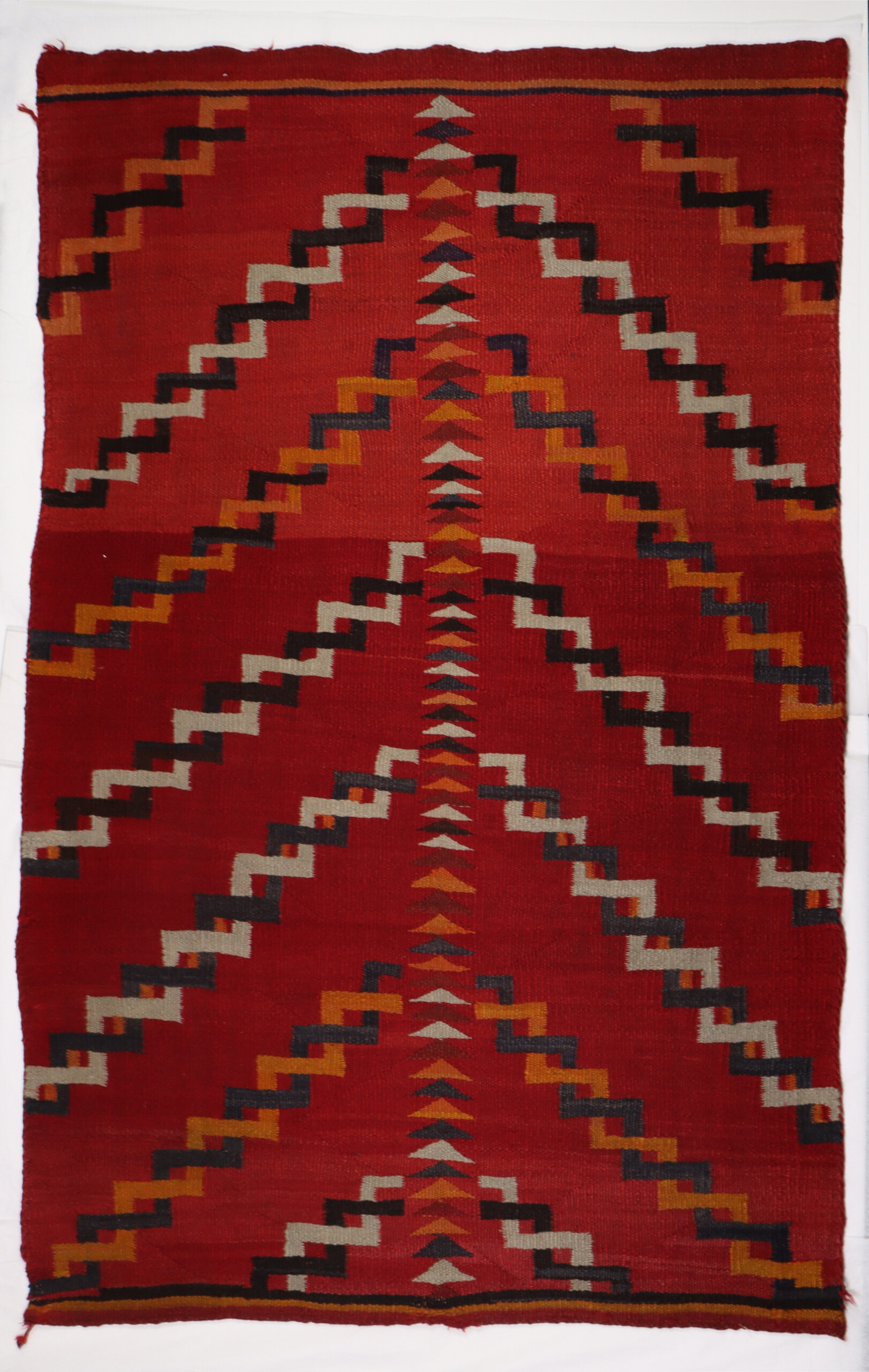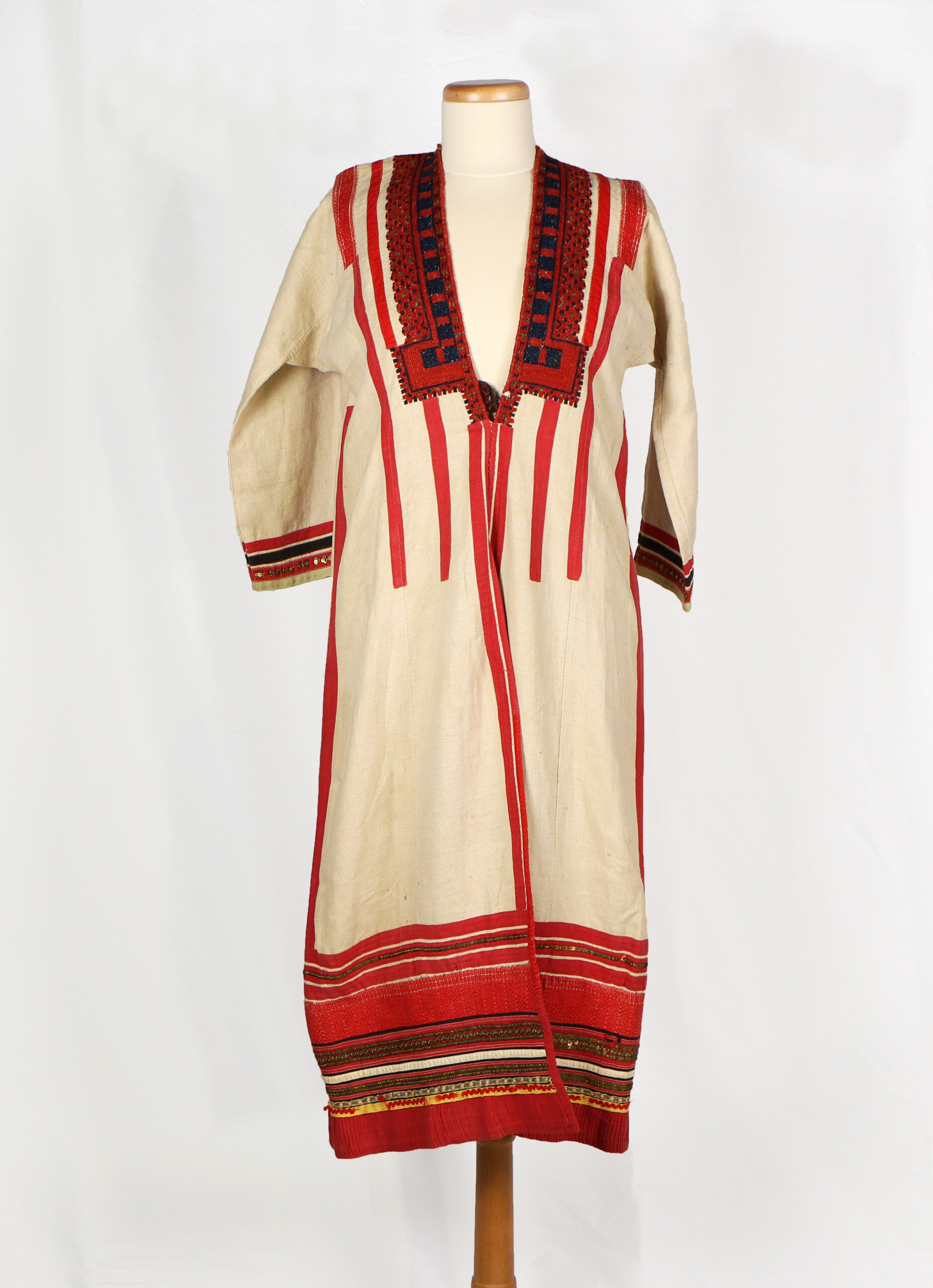The Diné people are a historically oral culture, meaning they pass on story, myth, and history within material culture and spoken word rather than written documents. Through items such as dance, pottery, or textiles, cultural history is remembered and retold. From 1864 to 1866 the Diné people were incarcerated at Fort Sumner in New Mexico [...]
Embroidered Cămașă (Blouse)
Kelsey Malone2024-12-31T09:30:03-05:00Worn during secular township celebrations and religious observances, folk clothing provides a visual language of connection to heritage and aids in creating a sense of community for groups of people. This cămașă (kah-ma-shah), or blouse, is an important mode of cultural identification. Women wear these blouses beneath aprons or wrap-around skirts and vests that provide [...]
Huipil
Berea College2016-07-19T14:13:56-04:00The huipil is the most common traditional garment worn by indigenous women from central Mexico to Central America. It is a loose-fitting tunic, generally made from two or three rectangular pieces of fabric which are then joined together with stitching, ribbons or fabric strips, with an opening for the head and, if the sides are [...]
The Rooster
Susan Romer2016-06-28T19:27:20-04:00Much of Pablo Picasso’s work dealt with moving away from standard academic art forms. This textile was designed in 1956 by Pablo Picasso for Fuller Fabrics’ Modern Masters print series. The Modern Masters series included textile designs by Picasso, Míro, Warhol, Léger, Dufy, and Chagall. The textiles were sold both for clothing and for furnishings, [...]
Kuba Cloth
Berea College2016-06-28T18:05:54-04:00This textile, created in the Kuba Kingdom of what is now the Democratic Republic of the Congo, shows off the complexity of design that the Kuba Kingdom was known for in their textiles. The Kuba Kingdom was highly prosperous, uniting 19 different ethnic groups between the early seventeenth century and mid-nineteenth century. The cloth had [...]
Red Velvet Chasuble
Susan Romer2019-05-15T09:05:19-04:00The chasuble is the outermost liturgical vestment worn by clergy for the celebration of the Eucharist in Western-tradition Christian Churches that use full vestments, primarily in the Roman Catholic, Anglican, Lutheran, and United Methodist Church (during the Eucharist). In the Eastern Orthodox Churches and in the Eastern Rite Catholic Churches, the equivalent vestment is the phelonion. The chasuble originated [...]
Toran
Susan Romer2019-05-15T09:05:19-04:00Toran is the Sanskrit name of a sacred or honorific gateway. Torans are used both personally, in homes, and sacredly in Buddhist and Hindu architecture. Its typical form is not fabric, as is shown here, but a wood or stone. Especially in Temple entrance ways, torans are sculptural post and lintel systems.This fabric toran was more [...]
Turquoise
Berea College2016-06-23T18:52:39-04:00Alexander Calder designed a series of fourteen wall hangings in 1973 as a part of a 1972 Nicaraguan earthquake relief project. Calder’s designs were produced by more than one hundred master weavers from Nicaragua and Guatemala. The weavers worked with natural braided sisal, a fiber made from native agave plants. The pieces were not woven, [...]








